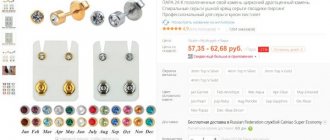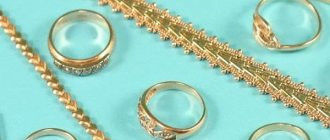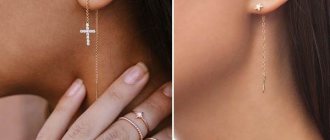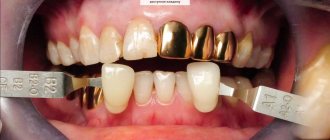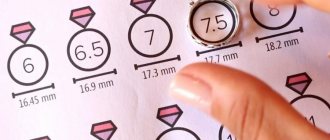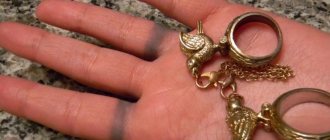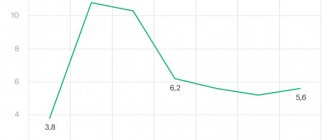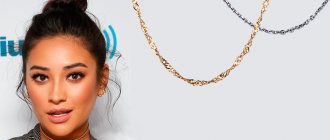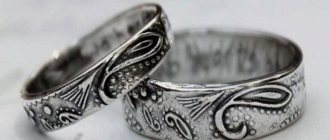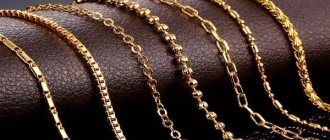Where can you get your ear pierced?
The human ear is not just a hearing organ. Currently, medicine has proven that in the auricle there are many points responsible for a certain internal human organ. If you accurately find the points located in the ear area, you can use massaging movements to provoke functional changes in any internal organ. It is on this knowledge that the technique – acupuncture – is based. Acupuncture is a therapeutic method that helps normalize the functioning of various body systems.
The lobe is the safest place to pierce so that the earring can be inserted. The lobe does not have cartilage and heals quickly after the procedure. If any active point was touched during the piercing, this will not affect the deterioration of health, as experts - neurologists believe . A simply affected point will no longer have an effect on the organ with which it was connected.
It is believed that when it hits a point associated with the eyes, a person’s vision deteriorates and tearing occurs. But it also happens the other way around. Cases have been recorded where, when the ear of a person with poor vision was pierced, it improved. That is, ear piercing can cause harm to the body or, on the contrary, be beneficial. Before you decide to have your ear pierced, you should consult a reflexologist who specializes in auricular medicine.
Caring for your lobes after a piercing
Sanitary care must be carried out regularly. Twice a day, the earlobe or cartilage is treated with a cotton swab soaked in a sterile antiseptic solution (Miramistin, Chlorhexidine, ethyl alcohol, Furacilin, potassium permanganate solution). It is strictly forbidden to twist the earring.
Do not touch the piercing with unwashed hands. It is better to wear long hair in a ponytail. You should try not to touch your jewelry with clothing. Any rupture will be accompanied by severe pain and bleeding. You need to sleep on clean bed linen; experts recommend changing it once every 2 days. The earrings cannot be removed until the wounds have completely healed.
Should children's ears be pierced?
Day after day, children pay attention to the beautiful jewelry in their mother’s ears and try to copy her. Parents, following fashion, in turn, strive to pierce their children’s ears at a very young age and do not want to think that the child is just beginning to form his own concepts and interests, which sometimes do not coincide with the interests of the parents. After the puncture, the child may experience pain. Therefore, it is necessary to immediately follow all recommended procedures.
The result of ear piercing in children can be the most unpredictable. Doctors do not recommend piercing the ears of children under three years of age. And at the same time, according to researchers of this problem, keloid scars can form in children after 11 years of age as a result of a puncture. In addition, doctors inform parents that points located on the earlobe can have an adverse effect on the eyes, teeth, tongue, and also on the facial muscles. However, psychologists advise piercing the ears of children under the age of 1.5 years, since the child is not yet able to feel fear and the feeling of pain quickly disappears.
There are contraindications for ear piercing in children. You should not get a puncture if you have chronic skin diseases, diabetes, low immunity, or severe illness. Complications after piercing can also occur in healthy children. Therefore, before getting a puncture, you need to see a dermatologist.
What to do if your ear starts to fester
An unpleasant consequence of the piercing is the wound in the baby’s ear becoming suppurated. Poorly processed piercing devices, improper care after the procedure, and replacement of earrings can provoke an inflammatory process and infection. A scar may remain on the ear, and the girl will no longer be able to wear earrings.
To eliminate suppuration and exclude other complications, treatment should be started immediately:
- Consult a doctor . Especially with prolonged suppuration, detection of redness in the neck area, compaction in the lobe, in the future it may turn black due to tissue death.
- Apply medication to the wound yourself. Use " Miramistin " to spray the wound 2-3 times a day, " Solcoseryl ", " Levomekol ", lubricate the inflamed areas with syntomycin ointment. You can wash out the suppuration with hydrogen peroxide.
- Urgently go to the surgeon if the ear turns black, begins to swell, or the child has a fever. The doctor will administer anesthesia and examine the baby. Surgical intervention may be required to eliminate the source of inflammation and clean the wound from pus.
- Don't ignore folk remedies. Grandmother's advice helps treat inflammation without medication:
- aloe juice draws out pus, heals the wound, relieves pain;
Cut a leaf of the plant in half, attach it to the ear, and replace it with a new one after two hours. Use the recipe several days in a row.
- baths with sea salt disinfect the wound.
Self-piercing of children's ears at home often leads to complications. This is absolutely not allowed !
Inflammatory processes on the lobe and inside the auricle lead to serious consequences. These are paralysis of the facial nerves, keloids, tissue ruptures, hearing and vision disabilities. It is unknown how many troubles await in this case and how many complications you will encounter.
Make the right choice by entrusting your child to professionals. This way you will protect your little princess from complications, and she will be happy with her earrings in her little ears.
Ear piercing procedure.
You can get your ears pierced at any beauty salon. The procedure is quite quick and safe. Then sterile nails treated with a special solution are inserted. The puncture can also be done by specialists from piercing salons.
Ear piercing is carried out with a gun, which is a safe means. The downside of the “gun” is its reusable use. Despite the fact that it is disinfected, one hundred percent sterilization cannot be achieved. This is due to its design features. Another disadvantage of the “pistol” is its sudden sound, which can frighten a child. But there are also disposable pistols.
How the process works
Before going to a medical center or a piercing salon, your baby needs to understand and know the intricacies of the ear piercing process. This is necessary to monitor the correctness of the specialist’s manipulations, monitor the child’s safety, reduce the risk of infection, and get rid of fear. The puncture takes place in several stages:
- Visual inspection . The specialist identifies the presence of contraindications. The child’s ears, skin, eyes, and head must be clean, without scratches, wounds, or suppuration.
- Tool processing . A very important stage, it needs to be controlled in order to avoid complications with the ears, hole in the lobe later.
- Puncture with a gun, needle . It is done quickly, in the presence of adults. Earrings are inserted using an automatic device or manually.
- Checking the quality of the procedure . Pay attention to whether the punctures are symmetrical and whether the lock is tightly fastened. They can also make a hole unevenly in specialized centers, it all depends on the experience of the master.
- Consultation on wound care . Parents are often given a booklet with useful tips and instructions. You should definitely take the technician’s phone number for consultation in unforeseen circumstances.
Which earrings are suitable?
There is a wide variety of earrings used specifically after piercing. For example, in piercing salons they insert so-called earrings - needles made of high quality surgical steel. The earrings can be plated in gold. Needle earrings are decorated with semiprecious stones. Teflon is a hypoallergenic material from which earrings are made. It contains no components that release harmful substances and can cause allergies.
After having your ears pierced, it is not recommended to use silver earrings, as oxidation occurs when the silver comes into contact with the blood. During the oxidation process, an oxide is formed, which interferes with the healing of the puncture. This can lead to an inflammatory process.
After the puncture, for 3 weeks, 4 times a day, it is necessary to treat the wound and earrings with antiseptic agents. One of the most effective methods for rapid wound healing is medical glue, which is applied to the puncture. Also, for a month, doctors do not advise visiting swimming pools and open water bodies to avoid infection.
Myth 2. It is better to insert gold earrings into a fresh piercing.
In fact, it is better to opt for hypoallergenic metals, such as nickel or silver earrings. Gold from common samples (585th sample) is 60% precious metal and 40% other “additives” (nickel, copper, silver, palladium).
Nickel is dangerous because it provokes various forms of contact dermatitis. White gold contains the most nickel; yellow gold usually contains copper.
With silver, things are also not very simple. A good option for a fresh piercing would be high-quality 925 silver, if it did not oxidize. Still, such a chemical reaction does not promote healing at all.
For the initial puncture, it is best to choose materials that do not come into active contact with the skin. Hypoallergenic titanium (a durable metal used in prosthetics and dental implants) or biocompatible polymers (bioplast, bioflex) are well suited for these purposes.
When is it better?
The choice of the optimal age for piercing depends on the state of health, the character of the girl and the opinion of the parents on this matter. The best period of life, from the point of view of doctors, is considered to be between 5 and 8 years of age .
A popular children's doctor, author of famous television programs about raising children, Dr. Komarovsky believes that piercing the ears of children under one year of age is an act of terrorism and extremism. In his opinion, it is better to wait until the baby grows up, the girl is 5-10 years old, and maybe more.
However, puberty (11-14 years) is also not the best period for piercing. Wounds take longer to heal, the body needs strength for hormonal changes. It is advisable to have time to complete your plans before this time. But the final decision, of course, is made by the parents.
It is important to consider the time of year. Winter is the period of hats, scarves, and collars. Pierced ears can be injured when getting dressed and catch a cold. In summer, the risk of mechanical damage to the earlobes is minimal, but it is dusty and windy outside, and there is a possibility of wound infection.
- 5 reasons why “ears” appear on the thighs and ways to combat them
For these reasons, spring and autumn are the optimal periods for piercing. In May and September there is no need to wear hats, there is no heat or dust.
Some parents choose the time for piercing according to signs and the lunar calendar. The 1st – 5th day of the new lunar month is suitable for the earlobe
